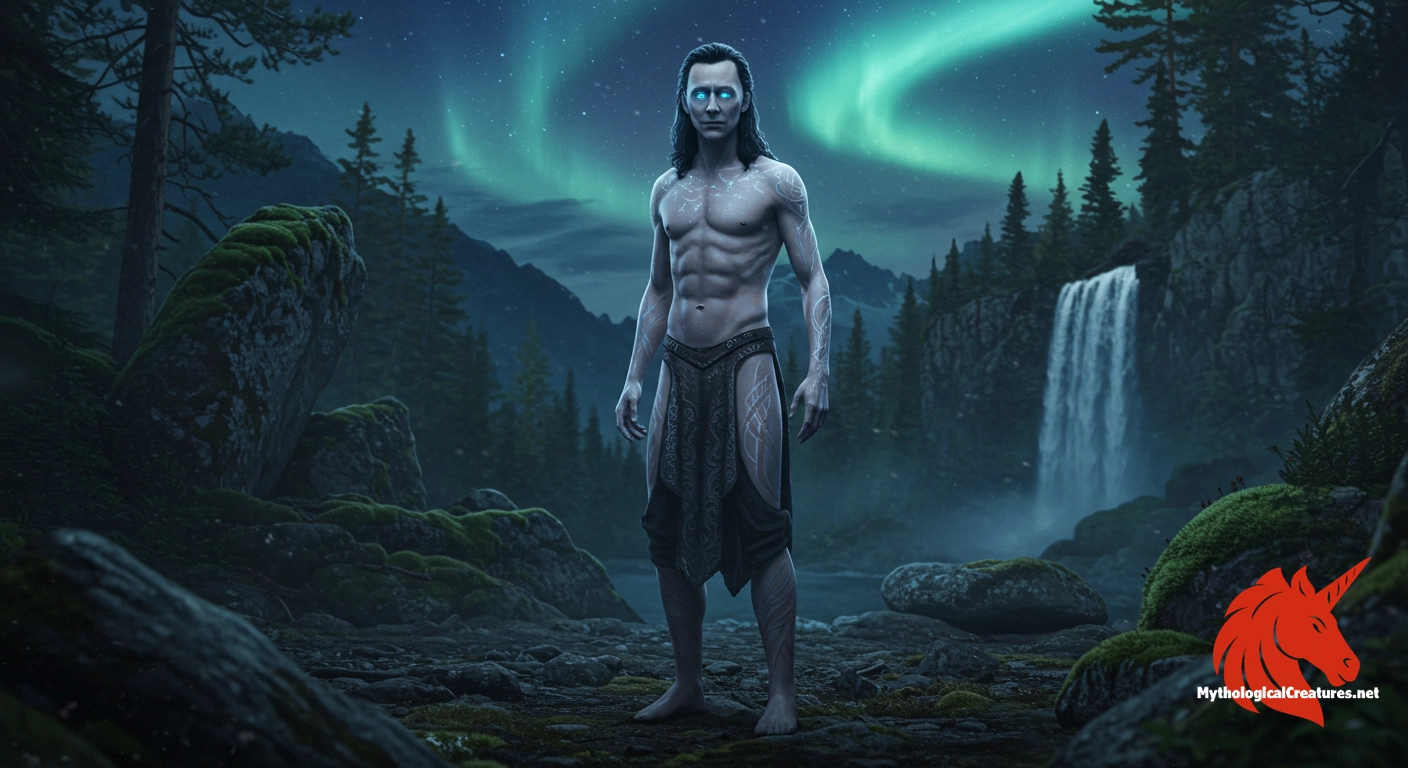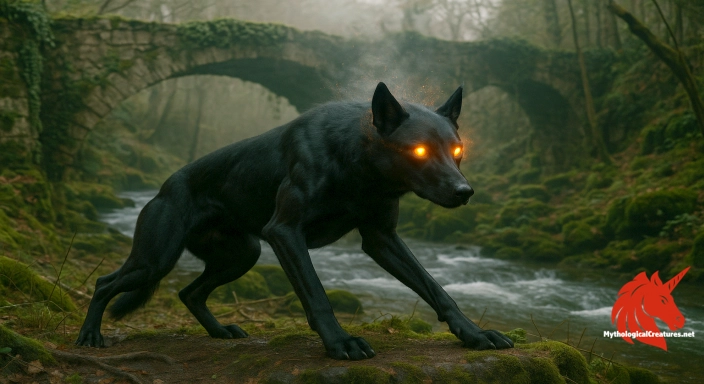Loki: Loki is the Norse god of mischief renowned for his shape shifting and cunning deception.

Loki
Loki - Loki is pivotal in precipitating key mythological events, including Baldr's death and the onset of Ragnarök.
Origins & First Encounters
Loki emerges as one of the most complex and enigmatic figures in Norse mythology, a deity whose origins interweave the divine with the chaotic forces of the jötnar. Born of Fárbauti, a fearsome giant, and Laufey, a goddess of ambiguous nature, he embodies a duality of traits that defy simple categorisation. His early attestations in myth reveal a figure both cunning and unpredictable, whose actions oscillate between beneficence and malevolence. The intricate familial ties—brother to Helblindi and Bíleistr, husband to Sigyn, and father to a host of significant beings such as Hel, Fenrir, Jörmungandr, and Sleipnir—further complicate his role in the divine hierarchy. Loki’s narrative is set against a backdrop of a cosmology that reveres both order and chaos, thus highlighting his importance in catalysing change. He is not merely a trickster; his interventions often precipitate irrevocable shifts in the destinies of gods and men alike. His involvement in the fatal event surrounding Baldr and his eventual punishment underscore the high stakes of his mischief. The mythic accounts suggest that his rebellious spirit also hints at a deeper, more transformative purpose within the cosmic order. His multifaceted nature continues to capture the imagination, inviting interpretations that range from deviant trickster to necessary agent of change. Ultimately, Loki’s legacy is inseparable from the very essence of Norse myth, where ambiguity and contradiction reign.
Source Texts & Tale Variants
Medieval manuscripts such as the Poetic Edda and the Prose Edda stand as the primary sources that illuminate Loki’s intricate mythos, while later compilations like Heimskringla add further layers to his narrative. These texts present a mosaic of stories that vary in tone and detail, reflecting the oral tradition from which they emerged. Different poetic accounts introduce unique variants of his exploits, sometimes portraying him as a mischievous companion to the gods and other times as a catalyst for their downfall. The saga literature and skaldic poetry go on to depict his shape-shifting abilities and elaborate familial ties, emphasising his propensity to blur boundaries between order and chaos. In some accounts, Loki is seen assuming forms as divergent as a salmon, a mare, a fly, or even an elderly woman, each providing a distinct perspective on his nature. The motifs around his complex interactions—such as the iconic punishment involving a venomous serpent and his eternal suffering—offer stark insights into his multifaceted character. Various runestones, including the Snaptun Stone and the Gosforth Cross, may subtly reference his myth, further evidencing his persistent presence in cultural memory. Nuanced reinterpretations in later folklore have often reshaped his persona, underscoring an enduring fascination with his trickster attributes. As such, the story variants encapsulated in these sources reveal a deity whose character is as mutable as the narratives that recount his deeds. This rich tapestry of sources continues to inspire both scholarly debate and imaginative retellings of his legendary exploits.
Form & Powers
Loki’s physical form is as mutable as his moral compass, displaying a range of appearances that reflect his nature of transformation. In his most common depiction as a god, he is often portrayed with an agile and lithe build, cloaked in an enigmatic charm that disguises the tumult within. His facial features can be described as sharp and expressive, with an ever-present glint in his eyes that hints at both mischief and profound intelligence. The inherent ambiguity of his nature is further symbolised when he shifts into various creatures, such as the sleek form of a salmon or the graceful yet wild guise of a mare. In these transformations, one perceives the interplay of beauty and the uncanny, as his contours adapt to convey both danger and allure. Scholars have noted that his portrayal oscillates between the aesthetically noble and elements that hint at his otherworldly origins, often symbolised by subtle physical markers that betray his jötunn lineage. No single depiction captures the entirety of his essence, since his appearance fluidly adapts to the narrative context. Artistic renditions sometimes imbue him with elegant Norse adornments, which contrast starkly with the rougher, unpredictable aspects of his nature. Intricate details, like the unnatural glimmer of his eyes or the unusual symmetry in his features, serve to remind the observer of the mythic duality that he so embodies. Thus, Loki’s physical descriptions remain as dynamic and varied as the myths that have been woven around him over the centuries.
Regional Faces
The portrayal of Loki exhibits notable variations across different regions within the Norse cultural sphere, reflecting local narratives and the diversity of oral traditions. In Icelandic sources, for instance, his cunning and humour are often accentuated, painting him as a clever instigator who operates on the fringes of both divine and human worlds. Norwegian sagas tend to highlight the darker aspects of his nature, emphasising his disruptive actions and the subsequent chaos that befalls the gods. In some Scandinavian depictions, his role is infused with subtle moral lessons that illustrate the delicate balance between order and interference, making him a figure both revered and feared. Germanic influences have similarly contributed to the amalgamation of his character, occasionally softening his more malevolent traits to present him as a necessary force in cosmic renewal. Local folklore across Scandinavia portrays him as a paradox—a figure who, despite his treacherous antics, is indispensable to the cyclical rhythms of nature and fate. His various incarnations across regions have led to artistic and literary reinterpretations that mirror the economic, social, and environmental challenges of the times. The traditional runic carvings found in different locales sometimes impart regional nuances to his myth, which serve as reflective microcosms of the local belief systems. By adapting to local cultural paradigms, Loki’s narrative demonstrates an impressive ability to absorb and reflect the values and contradictions of diverse communities. Overall, the regional adaptations of his myth serve to reinforce his status as a versatile and enduring symbol within Norse and broader Germanic traditions.
Cultural Parallels
Loki’s role as a shape-shifting trickster finds intriguing parallels in various global mythologies, drawing comparisons with trickster figures such as the Native American coyote and the West African Anansi. His fluid identity, marked by moral ambiguity and the capacity for both benevolence and malevolence, resonates with the archetypal tricksters from many cultural traditions. In Greek mythology, for example, the clever and elusive Hermes shares with Loki not only the penchant for mischief but also a deeper function as a mediator between different realms of existence. The common thread among these figures is their role in dismantling complacency and provoking change through unexpected acts and subversive humour. Loki’s narrative, with its blend of chaos and creativity, is echoed in the transformative episodes associated with these other mythic characters. Such cultural parallels highlight the universal fascination with the interplay between order and disorder that these archetypes embody. Both in ancient lore and modern reinterpretations, these figures challenge established norms, encouraging audiences to reassess rigid dichotomies of good versus evil. Furthermore, the comparative analysis reveals that while their mythic contexts may differ, they all serve to articulate the critical role of unpredictability and change in the maintenance of cosmic balance. By transcending cultural boundaries, Loki joins a pantheon of trickster figures that underscore the human struggle to reconcile the known with the unknown. Ultimately, the study of such figures deepens our understanding of the archetypal narratives that continue to influence our perceptions of divinity and destiny.
Legacy & Modern Evolution
The evolution of Loki’s myth has been marked by a profound transformation from a purely malevolent agent of chaos to a richly complex antihero appreciated by modern audiences. Once depicted in medieval texts as a figure whose transgressions precipitate divine retribution, he is now frequently celebrated for his sharp intellect and ambiguous morality. The reinterpretations in modern literature, film, and comics have reshaped his image, presenting him as a multifaceted character with both appealing charm and inherent ruthlessness. Over time, the stark punishment meted out to him in ancient lore has softened into a narrative of redemption and self-discovery that mirrors contemporary themes of identity and transformation. His enduring legacy is further underscored by the myriad ways in which his myth has been adapted to reflect modern preoccupations with power structures and the dynamics of rebellion. Creative adaptations have highlighted his role as a catalyst for change, positioning his trickster ethos as a counterbalance to authoritarian narratives. In these modern retellings, his moral ambiguity invites audiences to identify with the struggles between destiny and self-determination. The reimagined portrayals often engage with themes of uncertainty and the human condition, reaffirming his lasting influence in popular culture. Myth, art, and media continue to draw on his legacy, making him a timeless embodiment of both chaos and transformation. Ultimately, Loki’s journey from an ancient trickster god to a modern cultural icon underscores how myth adapts to meet the evolving questions of every generation.
Interesting Fact
Loki's dual parentage from a jötunn and a goddess epitomises the intricate interplay of chaos and order, a central theme that has fascinated scholars and enthusiasts of Norse mythology for centuries.
Quick Creature Info
Origin:
Features:
Associations:
Our Mythic Legendary Rating:

Habitat:
Supernatural Powers:
Physical Attributes:
Abilities:
Behavior:
Weaknesses:
Lore:
Related Creatures, Tales or Lore
- AAnansi
- CCoyote
- EEris
References
Discover Another Mythical Legend You May Not Have Heard Of?
Uncover the mysteries of ancient folklore and expand your knowledge of legendary beings from cultures around the world.
Dare to Meet the Augenbrand....
Curated by the Mythological Creatures Team (rev. May 2025)
